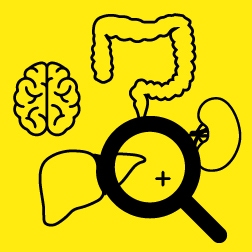Explore our solutions

Target area
Explore cell-based and biochemical assays by target area of interest, including cell and gene therapy, GPCRs, targeted protein degradation, and more.
Explore cell-based and biochemical assays by target area of interest, including cell and gene therapy, GPCRs, targeted protein degradation, and more.
- Biologics screening and characterization: Explore assays for biologics screening, mechanism-of-action studies, and biomanufacturing.
- Biomarker detection: Accurate detection and quantitation of molecular targets across serum, plasma, culture supernatants, cellular lysates, and other sample types.
- Cell and gene therapy: Discover and advance cell and gene therapy research with bioanalytical immunoassays for CGT development.
- Cell signaling: Focus on cell signaling and intracellular phosphorylated proteins, with streamlined approaches to pathway analysis.
- Cytokines: Access a comprehensive range of cytokine assay kits, including interleukins, interferons, chemokines, tumor necrosis factors, and lymphokines.
- Epigenetics: Leverage our epigenetics toolbox, designed to detect specific methylation and acetylation marks on histone peptide substrates.
- GPCRs: Measure cAMP levels and track downstream protein phosphorylation with functional GPCR assays.
- Protein kinases: Explore an extensive portfolio of protein phosphorylation assays, available in cell-based or biochemical no-wash formats.
- Protein-protein interactions: Utilize highly sensitive assays to study protein interactions involved in a range of biological processes.
- Receptor binding: Access cell-based solutions with no separation steps and eliminate radioactive waste, an improvement over traditional SPA and radioligand binding assays.
- Targeted protein degradation: Monitor protein expression levels and characterize the mechanism of action using our total and phospho kits.

Therapeutic area
Explore cell-based and biochemical assays by your therapeutic area of research, including oncology, neuroscience, metabolic diseases, and more.
Explore cell-based and biochemical assays by your therapeutic area of research, including oncology, neuroscience, metabolic diseases, and more.
- Autoimmune diseases: Comprehensive reagents for autoimmune disease research, including rheumatoid arthritis, lupus, inflammatory bowel disease, multiple sclerosis, and more.
- Obesity, diabetes, and metabolic diseases: Solutions for drug discovery in obesity, diabetes, and metabolic diseases, featuring assays for biomarker detection, protein analysis, and GPCR research.
- Fibrosis: Ready-to-use assays for monitoring biomarkers, phosphoproteins, and transcription factors relevant to fibrotic disease research.
- Immuno-oncology: Assays for studying immunity and immune cells, covering protein, biomarker, and cytokine detection, as well as cell toxicity and proliferation.
- Oncology: A comprehensive oncology portfolio, including assays for cytokines, biomarkers, phospho-proteins, cell proliferation, cytotoxicity, and more.
- Neuroscience: A wide range of neuroscience assays to support research in neurodegenerative disorders such as Alzheimer’s, Parkinson’s, and Huntington's disease.
- Virology: Assay technologies for viral studies, enabling assessment of viral life cycles and antiviral immune responses with streamlined workflows.
Featured resources































